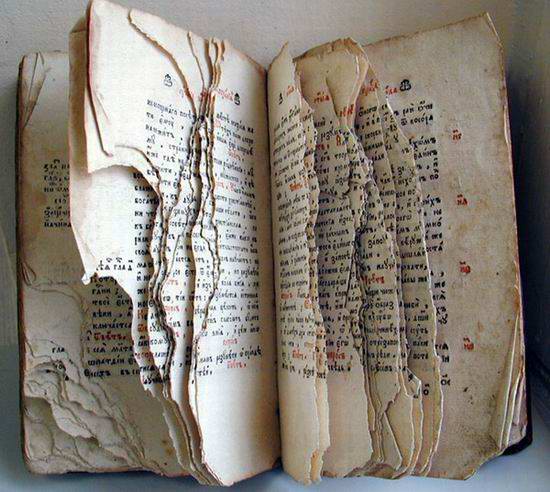You will need
- - paper of different sorts;
- - tea/coffee/cocoa/milk/decoction of onion peel;
- - brush, cotton swab, toothbrush;
- - iron
- - a candle or lighter;
- - solid eraser, fine sandpaper.
Instruction
1
There are several ways to give paper a vintage look. For example, using strong tea or infusion of other herbs and plants. Brew strong tea and pour it in a container of the type tray or trays. A sheet of paper put it into a tea (with tea leaves) and hold there to fiber paper impregnated with the dye solution. Then remove the sheet and let it dry. To speed up the drying process you can use iron, radiator or hair dryer.
2
If you need dyed unevenly, as if in some places darkened the paper, then using a brush you can re-apply a tea infusion to its surface, covering random spots. Torn edges can be obtained, tearing the paper directly in the vessel with tea.
3
The second method is staining of soluble coffee. In a roomy bowl, pour a few teaspoons of coffee with boiling water. The paper put in the coffee and hold for 10-15 minutes. Then remove the paper and air dry naturally or iron. Evaluate the results, and if you are not satisfied, repeat painting again, adding more coffee in the dye solution. You can put in coffee, crumpled paper – it all depends on what effect you want to achieve. In the same way toned paper in cooked cocoa. Only shade turns out a little different.
4
Toning decoction of onion peel. To do this, soak the onion peels in water at room temperature for three hours. The husk should fill ¾ of the volume. Then bring the water with the shuck to a boil. Reduce heat and simmer for about an hour. In the cooled cooked broth put the paper and wait for it to saturated liquid. If you need a smooth tone, then place the paper in the strained broth. After staining dry aged sheet. Experiment, because the result is impossible to predict accurately. Achieve the desired effect empirically.
5
Gives good results wetting the surface of the paper with milk. Cotton swab apply milk on the sheet. A little dry, and then hold the paper over a hot burner until it begins to darken. So you can get "old" unevenly darkened paper.
6
Additional effects of the old and "damaged" by time and circumstances, achieved with the use of fire, candles or lighters. Carefully sear the edges of "rarity" fire or hold the entire sheet over the flame to soot it in some places. Do not forget about safety precautions.
7
Will look intriguing on aged paper traces from a Cup of tea, coffee or a glass of wine. Put on the sheet a Cup of wet tea or coffee in the bottom, below footprint imprinted. You can simulate accidentally spilled droplets or "puddles" of drinks.
8
An additional effect may give the spray on the paper using a toothbrush all used in the tinting dye solutions or dye of a suitable tint.
9
You can also simulate and fading, wrinkling and other defects in the antique market. RUB the surface with an eraser or fine sandpaper, fold in half and draw the curved corners. Put under pressure for some time. In General, imitate all the things that could survive a paper, book, letter, photograph for their long years of existence.
Note
By charring the edges of the paper and working with the iron with extreme caution.
Useful advice
Particularly impressive will look aged paper loose varieties, because in the old days was produced just such a paper. Fine texture and has aged vellum.
To obtain a sheet of aged paper with smooth surface (paint, for example) pull a white sheet of paper on the tablet, and then toniruja. Leave the tablet to dry, and then remove and trim the curved edges of the sheet (or anneal, tear, etc.).
To obtain a sheet of aged paper with smooth surface (paint, for example) pull a white sheet of paper on the tablet, and then toniruja. Leave the tablet to dry, and then remove and trim the curved edges of the sheet (or anneal, tear, etc.).
